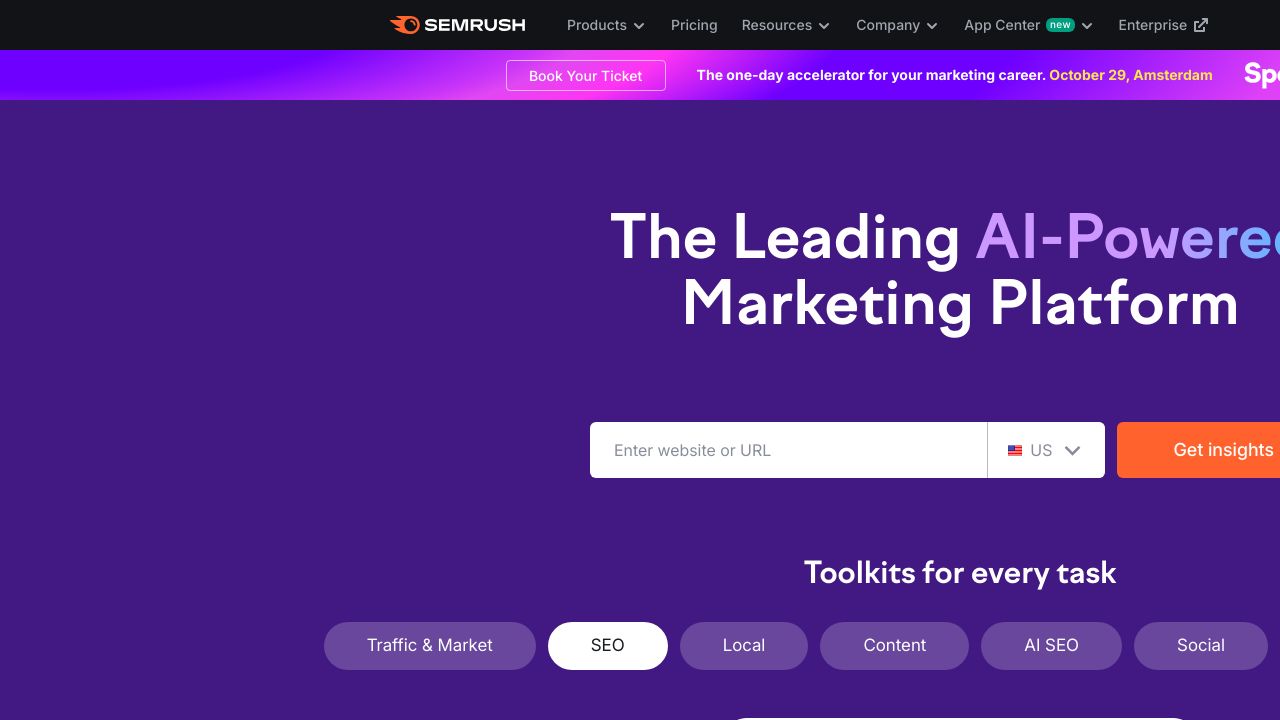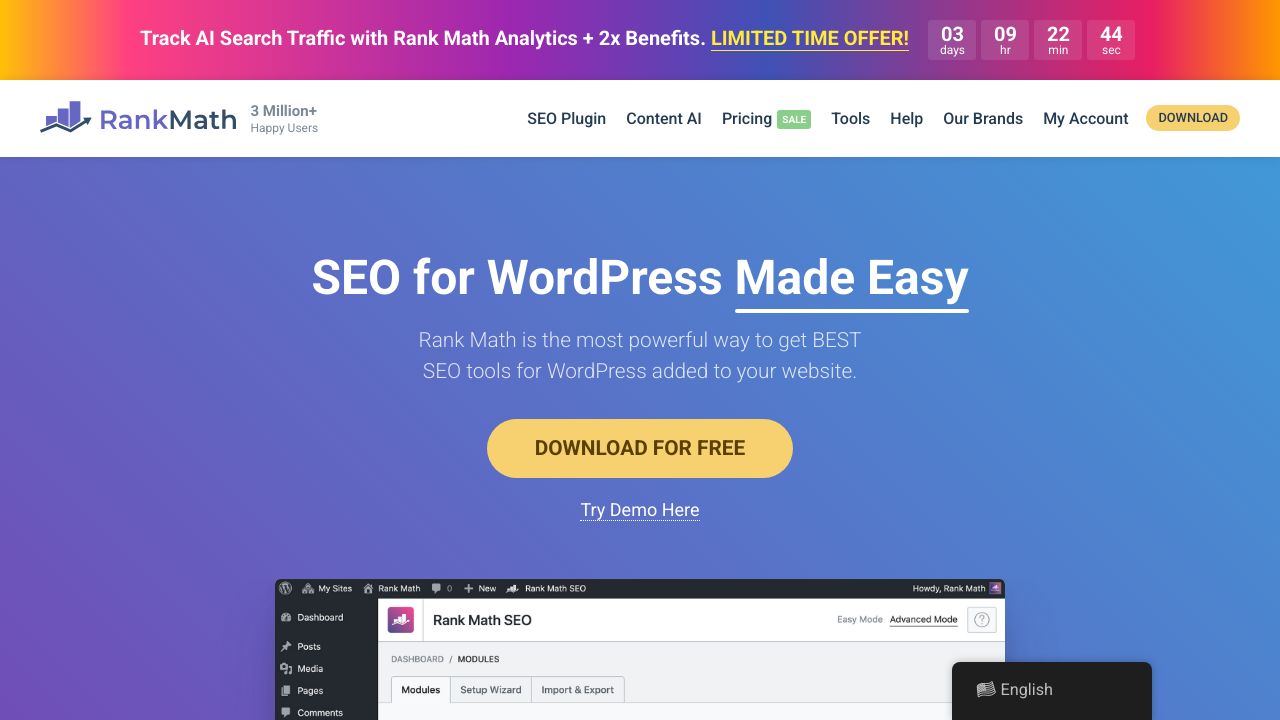Blog traffic isn't what it used to be. The days of publishing content and hoping people find it are over. With millions of new blog posts published daily, standing out requires more than good writing and basic SEO knowledge.

AI has fundamentally changed how successful bloggers approach traffic generation. Instead of guessing what topics might work or manually optimizing every piece of content, smart WordPress users are leveraging artificial intelligence to discover high-potential topics, optimize their content for maximum visibility, and distribute it across multiple channels automatically.
The competition has intensified dramatically. Companies like Kinsta have grown their organic traffic by over 280% using systematic approaches that combine traditional SEO with AI-powered strategies. Meanwhile, bloggers still relying on outdated methods are watching their traffic stagnate or decline.
This guide covers three core areas where AI can transform your WordPress blog's traffic: intelligent topic discovery, content optimization, and strategic distribution. You'll learn specific tools, techniques, and workflows that work in 2025's competitive landscape.
AI-Powered Idea Discovery: Finding Traffic-Worthy Content Topics
The biggest traffic mistake most bloggers make? Writing about topics they think are interesting instead of topics people actually search for. AI eliminates this guesswork by analyzing massive datasets to identify content opportunities with real traffic potential.

AI Keyword Research Tools and Techniques
Traditional keyword research involves manually checking search volumes and competition levels. AI tools like SEMrush and Ahrefs now use machine learning to predict keyword difficulty, identify semantic variations, and suggest related terms you'd never find manually.
Start by feeding your main topic into an AI keyword tool. Instead of just getting search volume data, you'll receive clusters of related keywords, questions people ask, and even seasonal trends. For example, if you're writing about "WordPress security," AI might reveal that "WordPress malware removal" has lower competition but similar search intent.
- Use AI to identify long-tail keyword opportunities with lower competition
- Analyze search intent patterns to understand what users really want
- Find question-based keywords that match voice search queries
- Discover seasonal content opportunities before they peak
Content Gap Analysis with AI
Your competitors are probably missing obvious content opportunities. AI can analyze their content libraries and identify gaps where you can capture traffic they're ignoring.
Tools like MarketMuse compare your content against top-ranking competitors and highlight topics they cover that you don't. More importantly, they identify subtopics within your existing content that need expansion to compete effectively.
This isn't just about finding new topics. AI can reveal that your existing "how to increase blog traffic" post is missing sections on social media promotion or email marketing that competitors include. Adding these sections can dramatically improve your rankings.
WordPress Integration: Setting Up AI Research Workflows
The key to consistent traffic growth is making AI research part of your regular WordPress workflow. Instead of doing keyword research once and forgetting about it, successful bloggers create systems that continuously identify new opportunities.
Set up Google Alerts for your main topics, but feed those alerts through AI summarization tools to identify trending subtopics. Use WordPress plugins like RankMath that integrate with AI keyword tools to suggest optimizations as you write.
AI-Driven Content Optimization for Maximum Traffic

Creating great content is only half the battle. The other half is optimizing it so search engines understand what it's about and users want to click on it. AI excels at both technical SEO optimization and improving user engagement signals.
On-Page SEO Optimization with AI
AI can analyze your content and suggest specific improvements for title tags, meta descriptions, header structure, and keyword placement. But it goes deeper than basic optimization.
Modern AI tools understand semantic relationships between words. They can suggest related terms that strengthen your content's topical authority without keyword stuffing. For instance, if you're writing about WordPress security, AI might suggest including terms like "SSL certificates," "two-factor authentication," and "backup strategies" even if they weren't in your original keyword list.

- Optimize title tags for both search engines and click-through rates
- Generate compelling meta descriptions that improve organic CTR
- Structure headers to match user search intent and reading patterns
- Balance keyword density with natural, readable content
WordPress SEO Plugins with AI Features
WordPress SEO plugins have evolved beyond basic optimization checklists. Modern plugins like RankMath and Yoast SEO now include AI-powered features that provide real-time optimization suggestions as you write.
These plugins analyze your content against top-ranking competitors and suggest specific improvements. They can identify when your content is too thin compared to what's ranking, recommend additional subtopics to cover, and even suggest internal linking opportunities you might miss.
| Plugin | AI Features | Best For |
|---|---|---|
| RankMath | Content analysis, keyword suggestions, competitor comparison | Technical SEO optimization |
| Yoast SEO | Readability analysis, content structure optimization | Content readability and structure |
| SEMrush Writing Assistant | Real-time SEO recommendations, tone analysis | Content optimization during writing |
Internal Linking Strategies Using AI
Internal linking is one of the most underutilized traffic growth tactics. Most bloggers add a few random links and call it done. AI can identify strategic linking opportunities that actually move the needle on your traffic.
AI tools can analyze your entire content library and suggest internal links based on topical relevance, user journey optimization, and page authority distribution. They can identify orphaned pages that need more internal links and suggest anchor text variations that feel natural.
AI-Powered Content Distribution and Promotion
Publishing great content isn't enough. You need to actively promote it across multiple channels to maximize its traffic potential. AI can automate much of this promotion while making it more effective than manual efforts.
Social Media Automation and Scheduling
AI can transform your blog posts into multiple social media formats automatically. Instead of manually creating tweets, LinkedIn posts, and Facebook updates, AI tools can generate platform-specific content that drives traffic back to your WordPress site.
Tools like Buffer and Hootsuite now include AI features that optimize posting times, suggest hashtags, and even create variations of your content for different audiences. The key is setting up automated workflows that promote your content consistently without requiring daily manual work.
AI-Generated Content Repurposing
One blog post can become dozens of traffic-driving assets with AI repurposing. AI can extract key points from your WordPress posts and transform them into social media carousels, email newsletter content, video scripts, and even podcast outlines.
This multiplication effect is where AI really shines for traffic growth. Instead of each blog post generating traffic from just search engines, you're creating multiple touchpoints across different platforms where potential readers might discover your content.
- Convert blog posts into social media thread series
- Extract quotes and statistics for standalone social posts
- Create email newsletter content from existing blog posts
- Generate video scripts and podcast talking points
Essential WordPress AI Tools and Plugins
The WordPress ecosystem includes hundreds of AI-powered tools, but most bloggers don't need all of them. Focus on tools that directly impact traffic generation rather than collecting every AI plugin available.
Free AI Tools for WordPress Users
You don't need a massive budget to start using AI for traffic growth. Several powerful tools offer free tiers that provide real value for WordPress bloggers just getting started with AI optimization.
- ChatGPT for content ideation and optimization suggestions
- Google Search Console for AI-powered search performance insights
- Ubersuggest free tier for basic keyword research
- Answer The Public for question-based content ideas
Premium AI WordPress Plugins Worth the Investment
When you're ready to scale your traffic growth efforts, premium AI tools provide advanced features that can significantly accelerate your results. These tools typically offer deeper analysis, more automation, and better integration with WordPress.
The key is choosing tools that solve specific problems in your traffic growth workflow. Don't buy premium tools just because they have AI features. Buy them because they solve bottlenecks that are limiting your traffic growth.
Measuring and Analyzing AI-Driven Traffic Growth
AI tools generate lots of data, but data without analysis doesn't improve traffic. You need systems to track which AI strategies are actually working and which ones are wasting your time.
Key Metrics to Track
Focus on metrics that directly correlate with traffic growth rather than vanity metrics that look impressive but don't drive results. The most important metrics for AI-driven traffic growth include organic click-through rates, time on page, and conversion rates from organic traffic.
- Organic traffic growth month-over-month
- Click-through rates for AI-optimized titles and meta descriptions
- Average time on page for AI-optimized content
- Internal link click-through rates
- Social media traffic from AI-generated posts
WordPress Analytics Setup
Proper analytics setup is crucial for measuring AI impact on your traffic. Beyond basic Google Analytics installation, you need tracking that shows which AI optimizations are driving results.
Set up custom events to track when visitors click on internal links suggested by AI tools. Create segments to compare traffic from AI-optimized content versus traditionally optimized content. Use Google Search Console to monitor how AI-generated meta descriptions affect click-through rates.
Advanced AI Strategies and Future-Proofing Your Traffic Growth
AI technology evolves rapidly, and traffic strategies that work today might be obsolete next year. Building sustainable traffic growth means staying ahead of emerging trends while maintaining what's currently working.
Voice Search and AI Optimization
Voice search is changing how people find content, and AI can help you optimize for these conversational queries. Instead of targeting short keywords, focus on natural language phrases that people actually speak.
AI tools can analyze your content and suggest conversational variations of your target keywords. They can identify question-based queries that match voice search patterns and help you structure content to answer these questions directly.
Building a Sustainable AI-Driven Growth System
The goal isn't just to increase blog traffic temporarily. You want to build systems that continue generating traffic growth over time with minimal manual intervention.
This means creating workflows where AI handles routine optimization tasks while you focus on strategy and high-level content creation. Set up automated monitoring for keyword rankings, competitor content analysis, and performance tracking. Use AI to identify when existing content needs updates or when new opportunities emerge.
The most successful WordPress bloggers treat AI as a force multiplier, not a replacement for strategic thinking. They use AI to handle time-consuming tasks like keyword research and content optimization while focusing their human expertise on creating unique value that AI can't replicate.
Remember that how to increase blog traffic using AI isn't about replacing human creativity with automation. It's about using AI to amplify your best ideas, optimize your content more effectively, and distribute it more strategically than manual methods allow.



